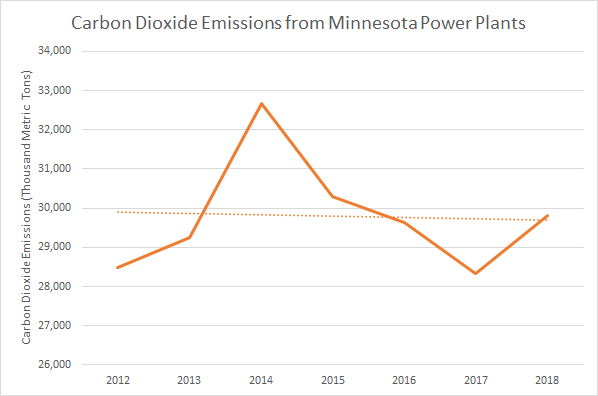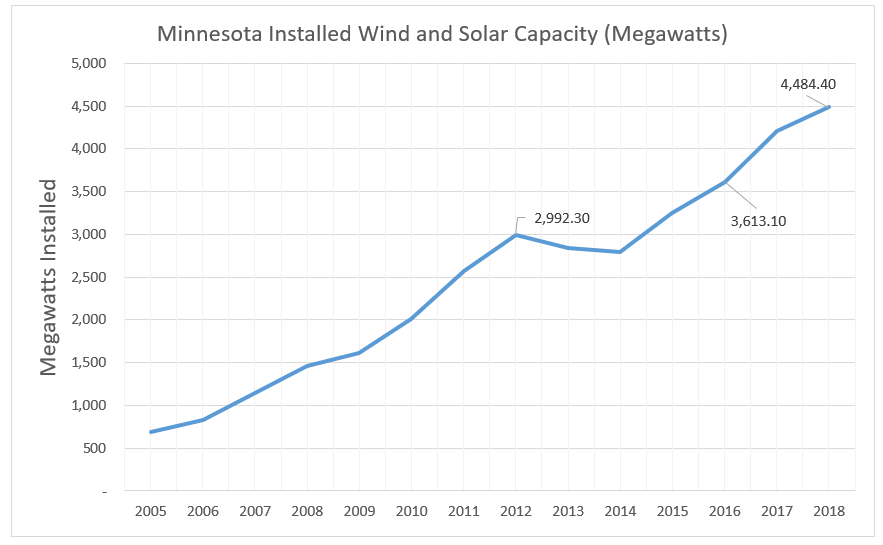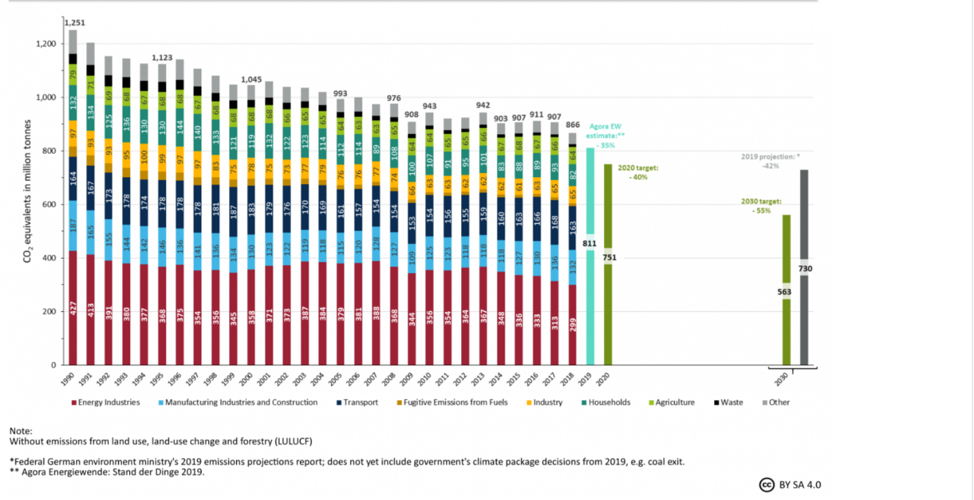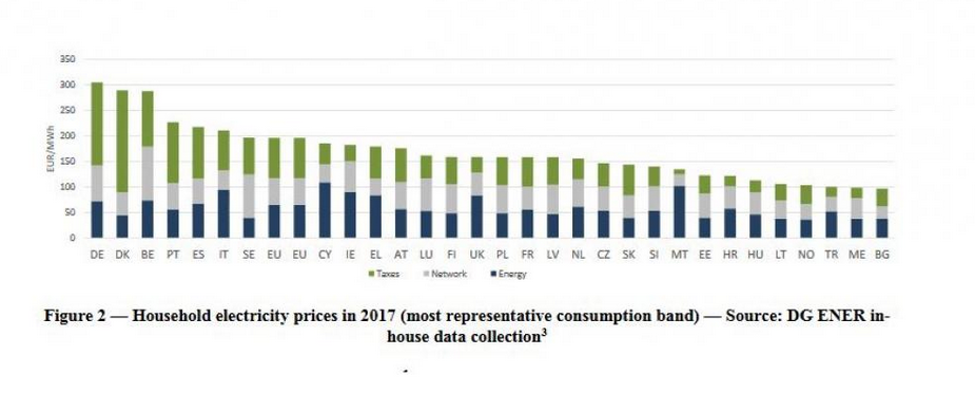Despite Massive Wind and Solar Spending, Minnesota Carbon Dioxide Emissions Essentially Flat Since 2012
When lawmakers like Governor Tim Walz and members of the Minnesota House of Representatives call for massively increasing the amount of wind and solar on the grid, they often do so because they claim climate change is an “existential crisis.”
If these lawmakers truly believe this talking point, though, they wouldn’t be advocating for building more wind and solar. This is because Minnesota has seen virtually no decline in annual CO2 emissions since 2012, despite the fact that we have seen wind and solar capacity increase by 50 percent during this time frame, according to U.S. Energy Information Administration (EIA) data.
The graph below uses emissions data from EIA, and it shows carbon dioxide emissions from power plants in Minnesota from 2005 to 2018. 
The data indicate that the state reduced emissions from power plants by about 24.5 percent since 2005, but most of these reductions occurred from 2005 to 2012. Since that time, there has been virtually no decline in carbon dioxide emissions, as they have remained essentially flat, which you can see in the graph below.

This plateau in emissions reductions has occurred even though Minnesota has increased the amount of wind and solar by 50 percent between 2012 and 2018. While some renewable energy groups pretend market factors drove this growth, the reality is wind and solar installations grew as a result of federal subsidies, state mandates for solar and renewable energy, and profit seeking on behalf of Xcel Energy.

While emissions remained relatively flat during this time, electricity rates did not. The graph below uses EIA data to show the residential electricity rates for each of Minnesota’s three investor owned utilities. You’ll notice that electricity rates were falling before Xcel Energy was first required to use renewable energy in 2005, but rates have skyrocketed since that time.

If the phenomenon of massive spending on renewables, virtually no reduction in carbon dioxide emissions, and rising electricity costs for families and businesses feels familiar, it’s because this is essentially what has happened in Germany as a result of their “Energiewende” or “energy transition. In this effort, Germany has closed down nuclear power plants and spent hundred of billions of Euros for virtually no reduction in emissions.

We see that German efforts to reduce carbon dioxide emissions have accomplished very little, but we also see that it has cost a lot. In fact, Germany now pays the highest electricity prices in Europe, which are about three times higher than those paid in the United States.

In summary, Minnesota and Germany have both spent a lot of money on renewable energy projects, but have seen lackluster results in reducing emissions in the last five years despite the fact that installed wind and solar capacity have grown dramatically. These policies have harmed all Minnesotans by raising costs for families and making our businesses less competitive with those in other states and countries.
If lawmakers really thought man-made greenhouse gas emissions were really causing a climate crisis, they’d legalize new nuclear and large hydro, but something tells me they’d rather virtue signal about their concern for the environment than actually do something practical about it.